Finding the right words can make your communication sound more caring, confident, and meaningful. Instead of always repeating “as you can see,” using different phrases helps you sound more natural, respectful, and warm. Whether you’re writing a professional email, giving a presentation, or speaking casually, these alternatives can strengthen your message and make it more personal and polished.
What Does “As You Can See” Mean?
The phrase “as you can see” is commonly used to point out something clear, visible, or already shown. It helps draw the listener or reader’s attention to something that’s obvious or proven.
Example:
- “As you can see, the numbers speak for themselves.”
👉 It highlights something that’s already clear or evident.
Is It Professional or Polite to Say “As You Can See”?
Yes, saying “as you can see” can be professional and polite if you use it with the right tone. It’s common in business presentations, reports, and explanations. But if used too much, it might sound a little dismissive or condescending. That’s why knowing polished alternatives is helpful for respectful and confident communication.
Synonyms For “As You Can See”
- As shown here
- As demonstrated
- As illustrated
- As evident
- As you notice
- As reflected
- As indicated
- As displayed
- As pointed out
- As observed
- As noted
- As it appears
- As evidenced
- As revealed
- As seen
- As made clear
- As highlighted
- As presented
- As mentioned
- As clearly shown
1. “As Shown Here”
👉 Scenario: This phrase is useful when showing someone a chart, graph, image, or visual proof that supports what you are saying. It’s often used in presentations, reports, or formal explanations.
👉 Meaning: It tells the listener to look directly at something visible or displayed, and understand the point without extra explanation.
Examples:
- As shown here, the numbers continue to grow steadily each quarter.
- As shown here, we achieved our target faster than expected.
- As shown here, the new system works much better than the old one.
- As shown here, our strategy improved performance significantly.
- As shown here, these results speak clearly for themselves.
Tone: Professional, clear, polite.
Detailed Explanation: This phrase sounds formal and respectful. It works perfectly when presenting visual data or showing proof in a business or academic context.
2. “As Demonstrated”
👉 Scenario: This is best used when evidence, tests, or actions have already proven something. It fits naturally in formal writing, presentations, or research discussions.
👉 Meaning: It emphasizes that proof or demonstration has already happened, so the conclusion is reliable and clear.
Examples:
- As demonstrated, our method produces consistent results in real settings.
- As demonstrated, this strategy brings measurable growth every quarter.
- As demonstrated, the product works effectively under pressure.
- As demonstrated, our team achieved remarkable improvements over time.
- As demonstrated, this solution provides practical and reliable outcomes.
Tone: Confident, formal, clear.
Detailed Explanation: This alternative shows that evidence supports your statement. It sounds credible and persuasive, making it great for professional, research, or technical communication.
3. “As Illustrated”
👉 Scenario: Use this when you explain something with the help of an example, story, picture, or graph to make your point easier to understand.
👉 Meaning: It tells the listener or reader that your idea has been visually or clearly explained through an example or demonstration.
Examples:
- As illustrated, the design is simple yet very effective in daily use.
- As illustrated, the process improves efficiency step by step.
- As illustrated, we can save more time using this method.
- As illustrated, this chart explains the concept very clearly.
- As illustrated, the approach works better than traditional methods.
Tone: Warm, polite, explanatory.
Detailed Explanation: This phrase adds a smooth and thoughtful touch to your explanation. It’s perfect when you want to guide people gently toward understanding a point.
4. “As Evident”
👉 Scenario: This is commonly used in formal writing, reports, and discussions to highlight something that’s already obvious or proven.
👉 Meaning: It communicates that the point is clearly visible or obvious, and doesn’t require further explanation.
Examples:
- As evident, our strategy is producing steady and powerful growth.
- As evident, the changes have improved results significantly.
- As evident, the progress is clearly shown in these charts.
- As evident, the outcome supports our initial plan perfectly.
- As evident, our team’s efforts have made a visible difference.
Tone: Professional, confident, neutral.
Detailed Explanation: This alternative works well in professional communication, making your statement sound firm and clear without sounding pushy.
5. “As You Notice”
👉 Scenario: This phrase fits well in friendly, polite, or conversational settings where you want to gently guide someone’s attention to something.
👉 Meaning: It invites the listener to observe and understand something they can already see.
Examples:
- As you notice, the design is very clean and simple.
- As you notice, we have added new details to make it clearer.
- As you notice, the structure looks much stronger now.
- As you notice, everything is well organized in this layout.
- As you notice, our progress has been steady and strong.
Tone: Friendly, polite, approachable.
Detailed Explanation: This alternative makes your communication sound kind and inclusive, as if you are walking the listener through your idea gently.
6. “As Reflected”
👉 Scenario: This phrase is great when you want to point out something that’s clearly shown through results, behavior, or performance. It’s often used in formal reports, evaluations, or thoughtful conversations.
👉 Meaning: It tells the reader or listener that the information clearly represents or mirrors the idea you’re explaining.
Examples:
- As reflected, the team’s consistent efforts have brought great success.
- As reflected, these results show how strong our strategy truly is.
- As reflected, customer satisfaction has improved steadily every month.
- As reflected, the changes have created a visible difference.
- As reflected, the data supports our conclusion with clear evidence.
Tone: Formal, professional, respectful.
Detailed Explanation: Using “as reflected” makes your statement sound thoughtful and well-supported. It’s often used when numbers, feedback, or outcomes clearly support your point.
7. “As Indicated”
👉 Scenario: This works well when you want to point out a detail that has already been mentioned, written, or presented earlier. It’s ideal for business communication, reports, and instructions.
👉 Meaning: It emphasizes that something has already been shown or stated, and now you’re gently reminding the listener or reader.
Examples:
- As indicated, the deadline is set for the end of this week.
- As indicated, the growth rate continues to rise steadily.
- As indicated, these steps are crucial for better results.
- As indicated, we will need more resources for this phase.
- As indicated, the new plan will improve our efficiency greatly.
Tone: Professional, polite, formal.
Detailed Explanation: This phrase adds a clear, factual tone to your communication. It’s a respectful way to refer back to something already presented or agreed upon.
8. “As Displayed”
👉 Scenario: Use this when you’re showing someone something visually—like a chart, slide, board, or document. It’s commonly used in presentations and business meetings.
👉 Meaning: It tells the listener to look directly at something visual that explains your point clearly.
Examples:
- As displayed, the performance increased significantly in the last quarter.
- As displayed, our revenue growth is steady and strong.
- As displayed, the timeline matches our original plan perfectly.
- As displayed, customer engagement is higher than before.
- As displayed, we’ve achieved key milestones right on schedule.
Tone: Clear, direct, professional.
Detailed Explanation: This phrase keeps your explanation straightforward and structured. It works well when your visual aid does the explaining for you.
9. “As Pointed Out”
👉 Scenario: This phrase works when you refer to something mentioned earlier by you or someone else. It’s common in discussions, explanations, and team meetings.
👉 Meaning: It means someone already mentioned or highlighted the point, and now you’re repeating or reinforcing it.
Examples:
- As pointed out, we need to focus more on quality improvement.
- As pointed out, the current approach has some clear limitations.
- As pointed out, our progress depends on teamwork and planning.
- As pointed out, early action can prevent many problems later.
- As pointed out, this strategy gives us a clear advantage.
Tone: Collaborative, respectful, clear.
Detailed Explanation: This phrase shows that you acknowledge previous input and value what has been shared. It creates a team-oriented and respectful tone.
10. “As Observed”
👉 Scenario: This is perfect when you or others have noticed a pattern, trend, or result over time. It’s often used in reports, evaluations, or thoughtful analysis.
👉 Meaning: It points out that something has been noticed or witnessed, and you’re now making it clear to others.
Examples:
- As observed, the new process saves a lot of time and effort.
- As observed, the response from customers has been very positive.
- As observed, the change made a visible difference in results.
- As observed, these trends show steady growth over the year.
- As observed, teamwork has increased overall productivity.
Tone: Neutral, professional, factual.
Detailed Explanation: Using this phrase makes your communication sound balanced and fact-based. It’s often used when drawing conclusions from observations or patterns.
11. “As Noted”
👉 Scenario: This is best used when something has already been written, mentioned, or highlighted earlier in the conversation or text.
👉 Meaning: It reminds the listener that the information isn’t new but already acknowledged.
Examples:
- As noted, the timeline remains the same for this phase.
- As noted, we will move forward with the updated plan.
- As noted, this change brings new opportunities for growth.
- As noted, clear communication is essential for success.
- As noted, the next steps are already outlined in the plan.
Tone: Polite, professional, formal.
Detailed Explanation: This phrase gives a calm and structured tone to your message. It’s great when you want to refer back to a key point without repeating it completely.
12. “As It Appears”
👉 Scenario: This works well when something is visibly happening or obvious to notice, and you want to gently highlight it.
👉 Meaning: It communicates that the situation is clear to see, and you are softly guiding attention to it.
Examples:
- As it appears, everything is working exactly as planned.
- As it appears, the team has handled the challenge successfully.
- As it appears, the design fits the requirements perfectly.
- As it appears, our efforts are producing the expected results.
- As it appears, the solution is clear and practical for everyone.
Tone: Gentle, clear, neutral.
Detailed Explanation: This phrase sounds soft and non-judgmental, making it great for polite and thoughtful communication.
13. “As Evidenced”
👉 Scenario: This is commonly used in formal, professional, or academic settings when you want to point to strong proof or supporting data.
👉 Meaning: It shows that there’s evidence or proof that supports what you’re saying.
Examples:
- As evidenced, the program improved results across all departments.
- As evidenced, the new method saved both time and resources.
- As evidenced, our strategy delivered consistent positive outcomes.
- As evidenced, customer satisfaction has increased rapidly.
- As evidenced, the data proves the effectiveness of this approach.
Tone: Formal, confident, authoritative.
Detailed Explanation: This alternative makes your point sound stronger and more credible, especially when backed by facts or data.
14. “As Revealed”
👉 Scenario: This is a good choice when something has been recently shown, discovered, or made clear through research, feedback, or observation.
👉 Meaning: It highlights new or clear information that supports your statement.
Examples:
- As revealed, the new campaign brought excellent results.
- As revealed, this method reduces costs more than expected.
- As revealed, the survey responses were overwhelmingly positive.
- As revealed, the findings align perfectly with our goals.
- As revealed, the progress is faster than earlier projections.
Tone: Informative, confident, professional.
Detailed Explanation: This phrase gives your message a sense of clarity and new insight. It’s perfect when sharing discoveries or key results.
15. “As Seen”
👉 Scenario: This phrase is great for short, direct communication, especially when something is visible or shown right away.
👉 Meaning: It means the evidence or point is clearly visible, so no extra explanation is needed.
Examples:
- As seen, the results are already showing strong progress.
- As seen, the design is simple yet elegant.
- As seen, the improvements are visible and measurable.
- As seen, the updates have made the system more efficient.
- As seen, our approach is working exactly as intended.
Tone: Clear, direct, neutral.
Detailed Explanation: This is a clean and simple alternative that works well in both professional and everyday communication.
16. “As Made Clear”
👉 Scenario: Use this when the point has already been explained or shown clearly earlier in the conversation or document.
👉 Meaning: It emphasizes that the idea is already well explained or proven.
Examples:
- As made clear, the rules must be followed carefully.
- As made clear, this change is necessary for improvement.
- As made clear, the direction of the project is set firmly.
- As made clear, teamwork is a top priority for our success.
- As made clear, the data supports our plan strongly.
Tone: Strong, professional, confident.
Detailed Explanation: This phrase helps reaffirm a point with confidence and authority while avoiding repetition.
17. “As Highlighted”
👉 Scenario: This works best when you or someone else emphasized a point earlier, often during presentations, reports, or meetings.
👉 Meaning: It shows that the important point has already been given attention, and now you’re reminding others gently.
Examples:
- As highlighted, this step is essential for reaching our goal.
- As highlighted, customer feedback plays a huge role in our process.
- As highlighted, this feature improves the overall user experience.
- As highlighted, our next move is crucial for success.
- As highlighted, the report shows clear and steady growth.
Tone: Professional, respectful, structured.
Detailed Explanation: This phrase gives your message a well-organized and polished tone, showing that you’re building on an earlier point.
18. “As Presented”
👉 Scenario: This is commonly used in formal presentations or written reports when you want to refer to something already shared with your audience.
👉 Meaning: It refers to information already shown or presented clearly earlier in the discussion.
Examples:
- As presented, the new strategy brings clear and steady growth.
- As presented, the team has already achieved excellent results.
- As presented, the data supports our original expectations.
- As presented, the project aligns perfectly with our vision.
- As presented, this solution offers the most efficient path forward.
Tone: Formal, polite, professional.
Detailed Explanation: This phrase gives your message a structured and serious tone, suitable for business or academic communication.
19. “As Mentioned”
👉 Scenario: This is perfect when something was already spoken or written about, and now you want to bring it back to attention.
👉 Meaning: It gently reminds the listener of a point already made earlier in the conversation.
Examples:
- As mentioned, the project will begin next Monday.
- As mentioned, we need everyone’s support for this step.
- As mentioned, these changes will improve overall results.
- As mentioned, clear communication is very important.
- As mentioned, our goal remains exactly the same.
Tone: Gentle, polite, clear.
Detailed Explanation: This phrase is simple but effective when you want to avoid repeating yourself while still making your message clear.
20. “As Clearly Shown”
👉 Scenario: This is best used when the proof or evidence is very obvious in front of your audience.
👉 Meaning: It emphasizes that the point is clear and visible, leaving no doubt in the listener’s mind.
Examples:
- As clearly shown, our efforts are delivering excellent results.
- As clearly shown, the design is user-friendly and efficient.
- As clearly shown, this approach gives us great advantages.
- As clearly shown, the new plan is already working well.
- As clearly shown, the data proves our strategy is effective.
Tone: Confident, strong, formal.
Detailed Explanation: This phrase gives your message a clear and powerful tone, especially when the evidence speaks for itself.
📝 Conclusion
Using different ways to say “as you can see” helps you communicate with more warmth, confidence, and clarity. Each alternative gives your message a slightly different tone and impact, whether you want it to sound gentle, formal, confident, or neutral. By carefully choosing the right phrase, you can make your communication sound more professional, respectful, and engaging without being repetitive.
❓ FAQs
1. What can I say instead of “as you can see” in formal writing?
You can use alternatives like “as demonstrated,” “as indicated,” or “as reflected” to sound more polished and professional.
2. Is “as you can see” too casual for professional settings?
It can be polite but sometimes too informal. Using a more formal alternative helps you sound clearer and more confident.
3. Can these phrases be used in presentations?
Yes, most of these alternatives like “as shown here” or “as displayed” are perfect for presentations where you refer to charts, slides, or graphs.
4. Which phrase works best in polite conversation?
Phrases like “as you notice” or “as it appears” are more gentle and conversational, making them great for polite speech.
5. Should I always replace “as you can see”?
Not always — but using variety in your language keeps your communication more engaging and respectful, especially in professional settings.
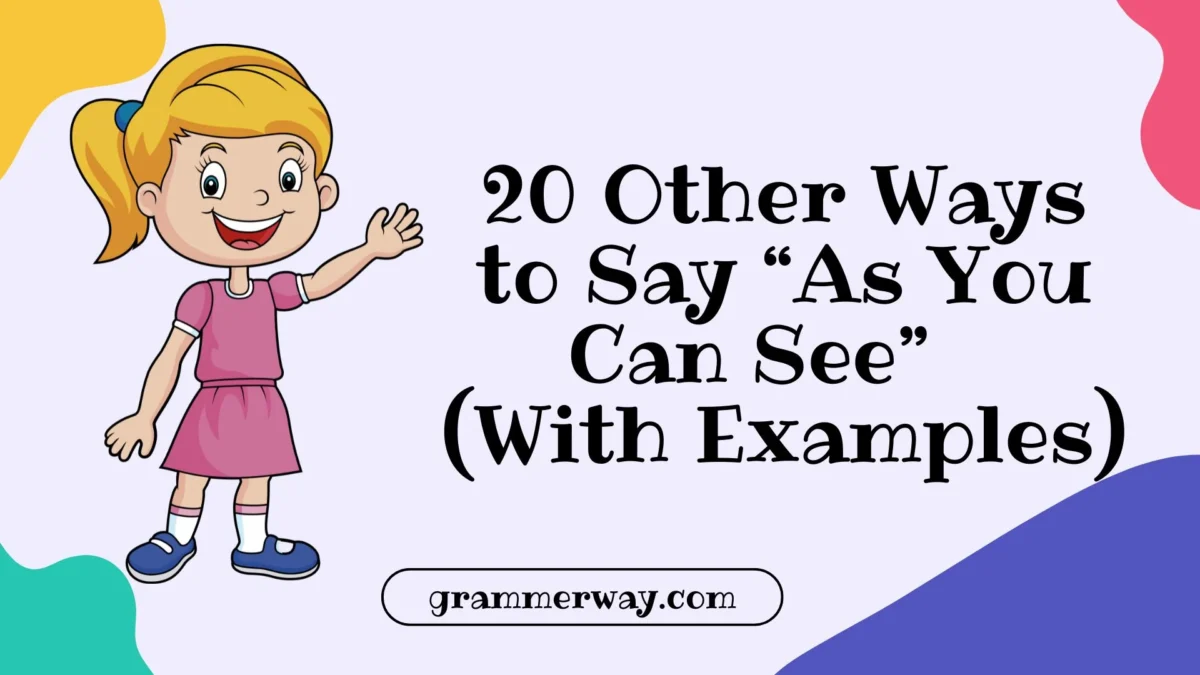

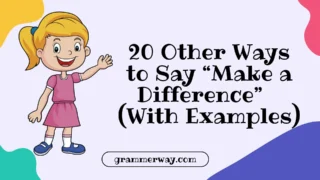
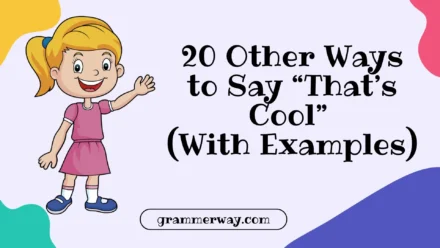

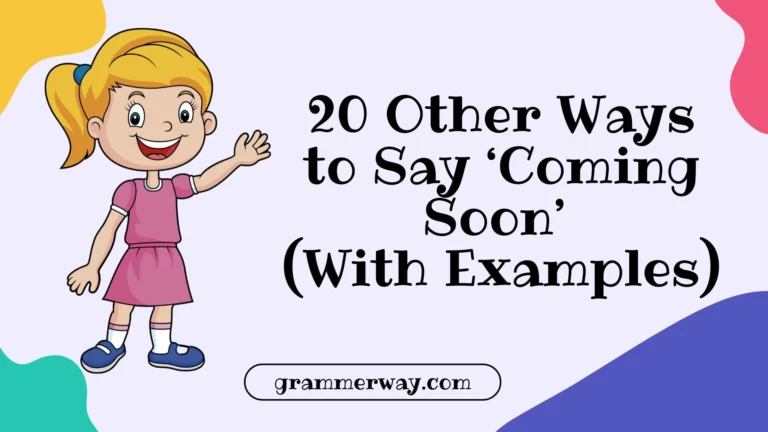
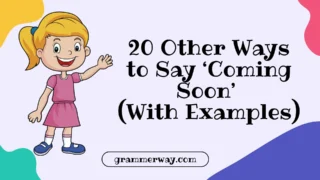
Leave a Comment